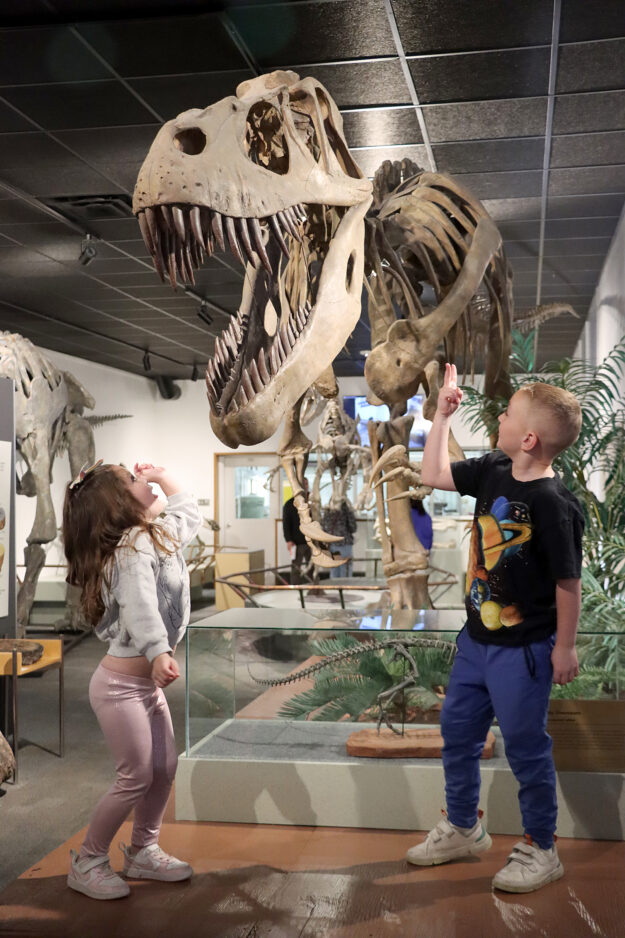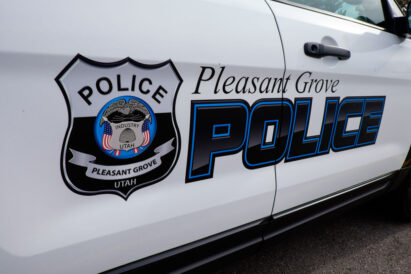BYU’s Museum of Paleontology continues to evolve
- In this undated photo, a boy and girl pose with a dinosaur fossil at the BYU Museum of Paleontology in Provo.
- In this undated photo, a boy poses with a dinosaur fossil at the BYU Museum of Paleontology in Provo.

Craig Conover, Daily Herald
In this undated photo, a boy and girl pose with a dinosaur fossil at the BYU Museum of Paleontology in Provo.
The Brigham Young University Museum of Paleontology has been a fixture on the corner of University Parkway and Canyon Road since its 1976 origins.
Supplied with an extensive collection of fossils, the museum is known for displaying impressive dinosaur bone exhibits just a pigskin’s throw from LaVell Edwards Stadium.
And though it focuses on relics of the past, the museum, which is part of the school’s geology department, continues to evolve.
“This museum has been here for decades. However, within just the last year, we redid most of this gallery area,” graduate student Carter McClellan said.
Old offices on the north part of the building were gutted and replaced with greater space for the exhibits.

Craig Conover, Daily Herald
In this undated photo, a boy poses with a dinosaur fossil at the BYU Museum of Paleontology in Provo.
Approximately 20 new exhibits, big and small, are on display, including a giant dinosaur skull.
“It’s really exciting to add a lot of new things that either we had in the back and just didn’t have room for or that are new donations that came in from purchase last year,” McClellan said.
Even with the new space, the amount of fossils on display is a small portion of the fossils the museum has in its possession.
The back of the museum is storage space, made up of tall shelves of fossils dug up by paleontologist James A. Jensen, whose collection started the museum, along with more recent works.
Most of the bones come from Utah or other areas of the western United States, though some are from as far as Asia and Africa, McClellan said.
“We have an amazing collection of Sauropod dinosaurs, one of the best anywhere,” he said.
The collection continues to grow as paleontologists and some BYU students participate in excavation field trips, including an ongoing excavation project for dinosaur fossils at the Cedar Mountain Formation near Moab.
As the museum continues forward, McClellan feels it plays an important role at the university, showing how The Church of Jesus Christ of Latter-day Saints belief system and science can be in accordance with each other.
“I know our museum curator, Dr. (Rod) Scheetz — we’ve been out in the field and he’s said, ‘God did a good job,’ while looking at all the rocks, the mountains, the hills. It’s beautiful,” McClellan said. “We talk about the creation, like the process of forming it, affecting today. So I think that balance of faith and science here is really impactful.”





